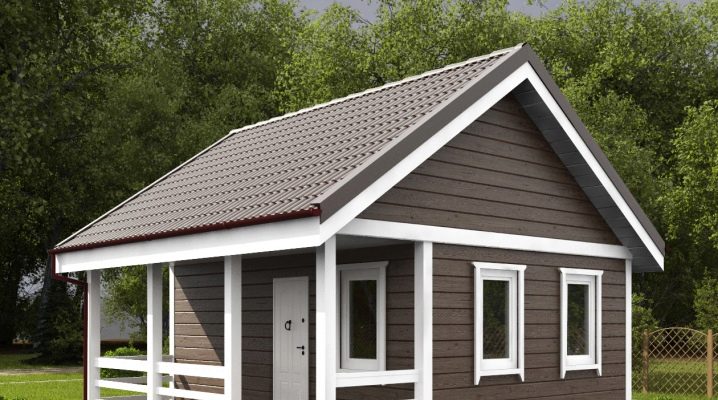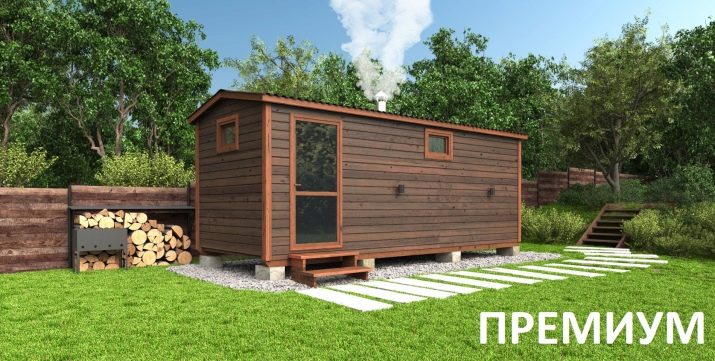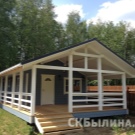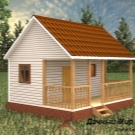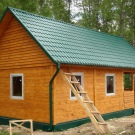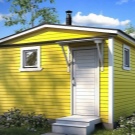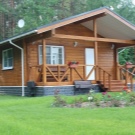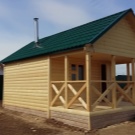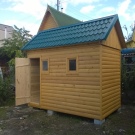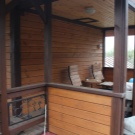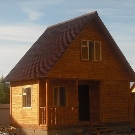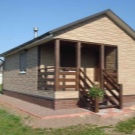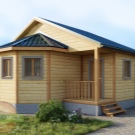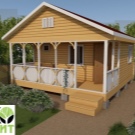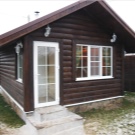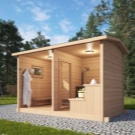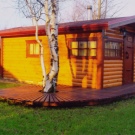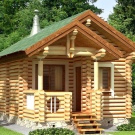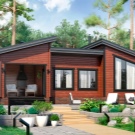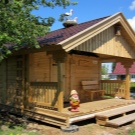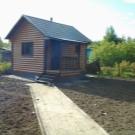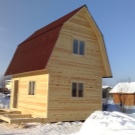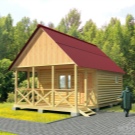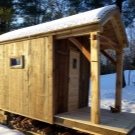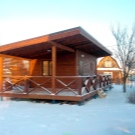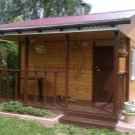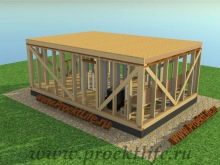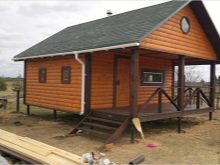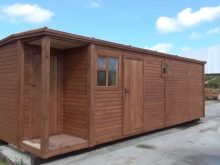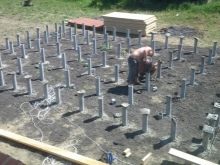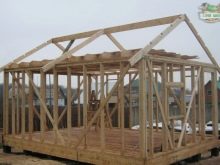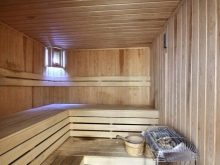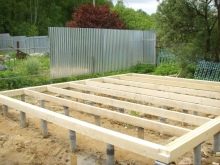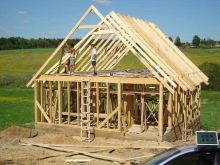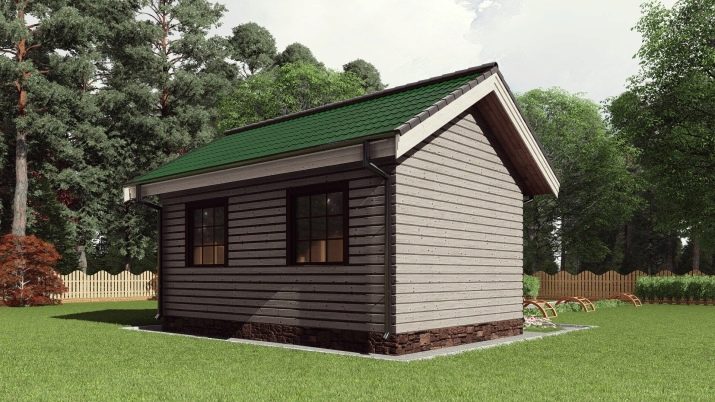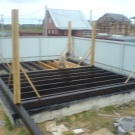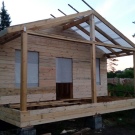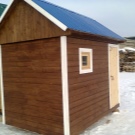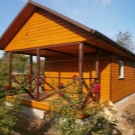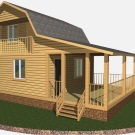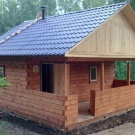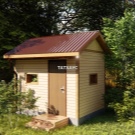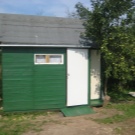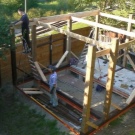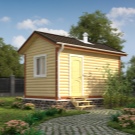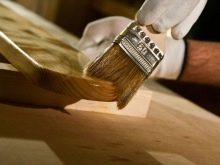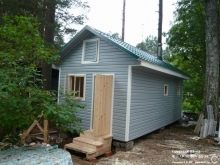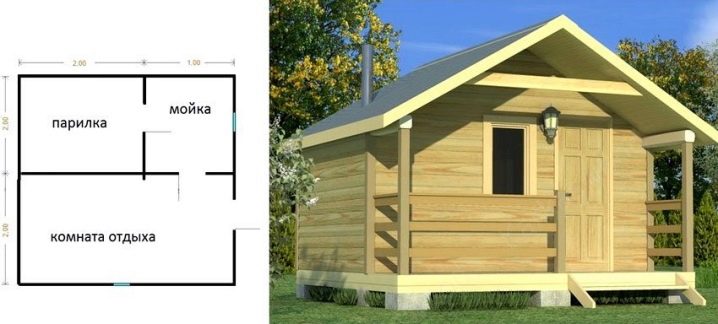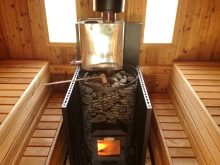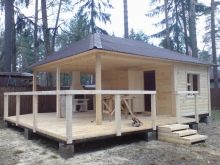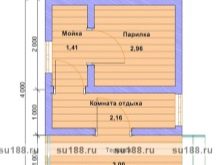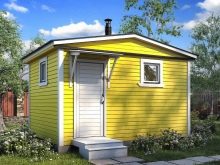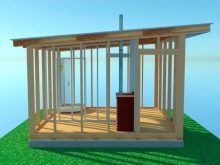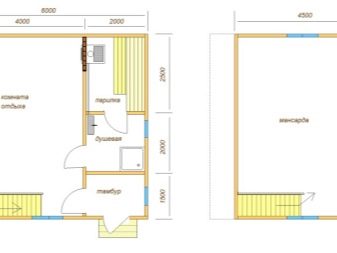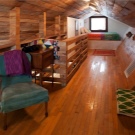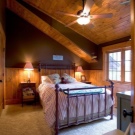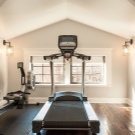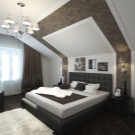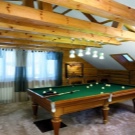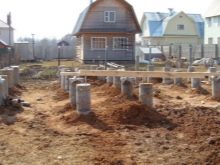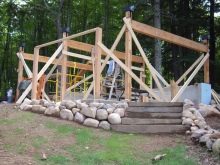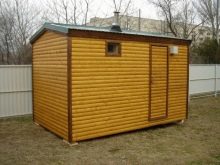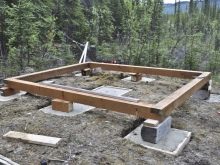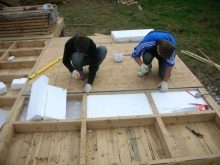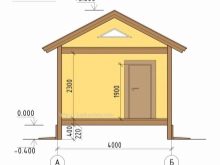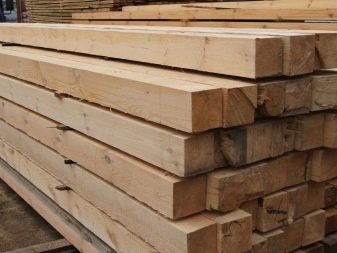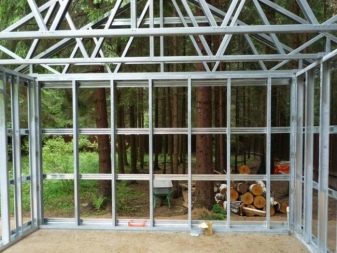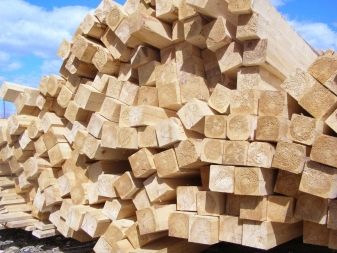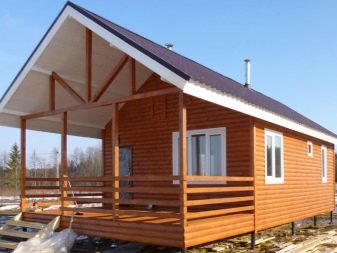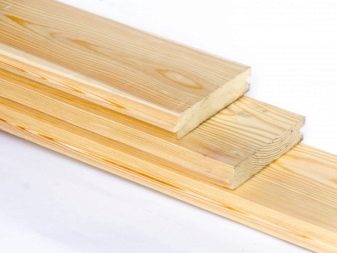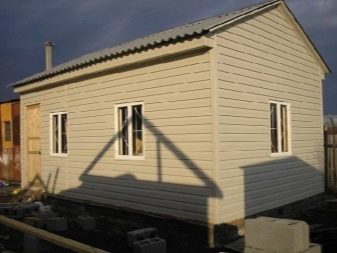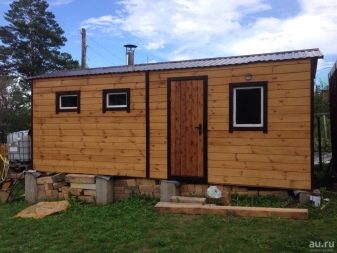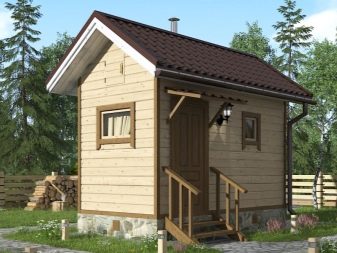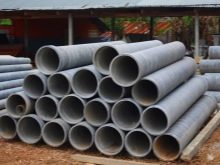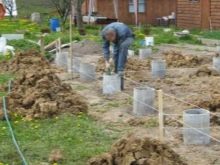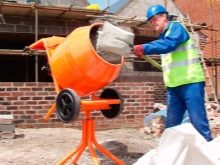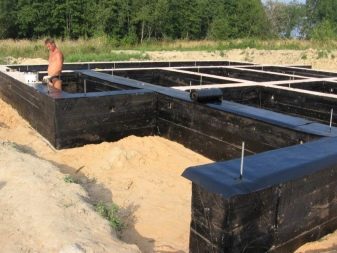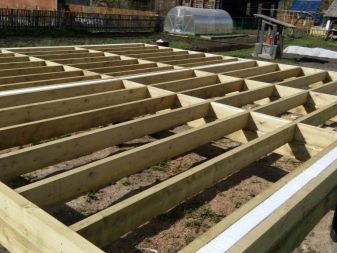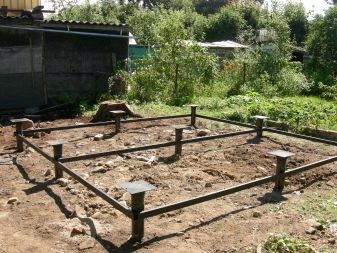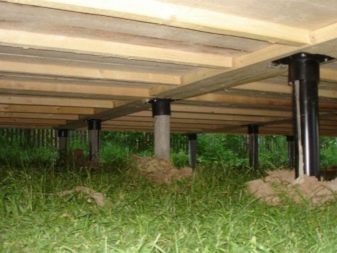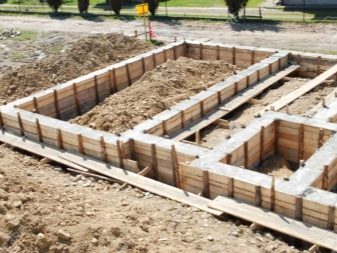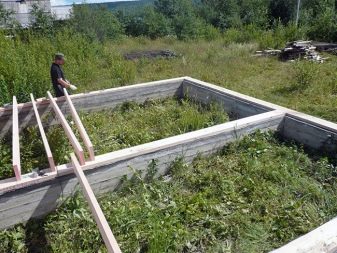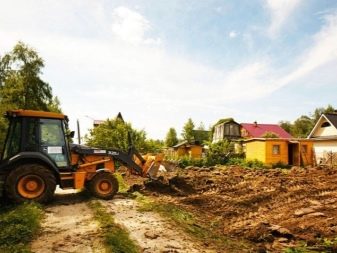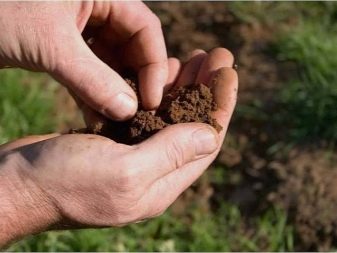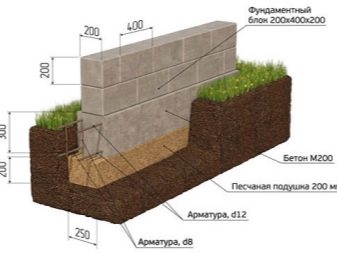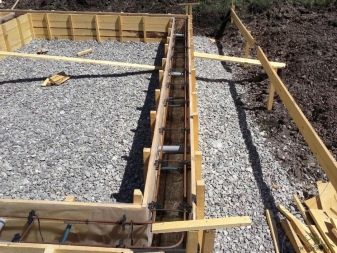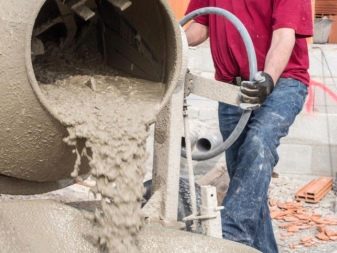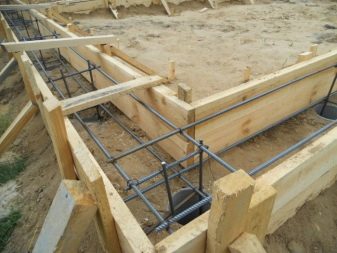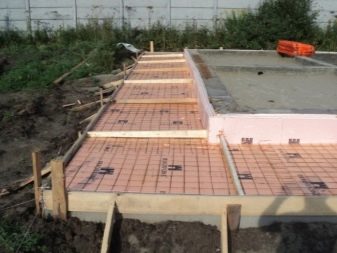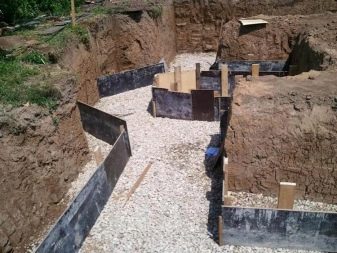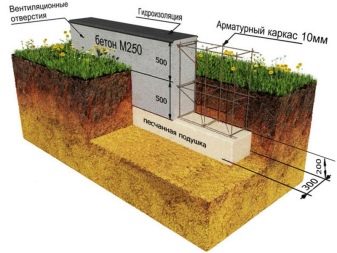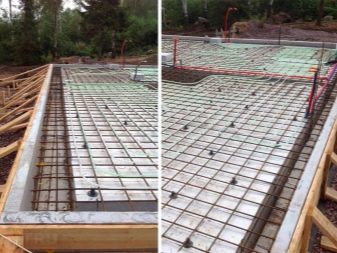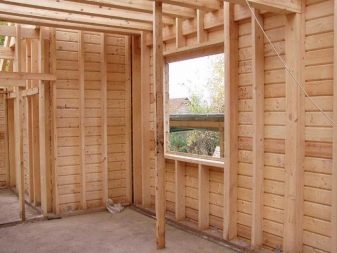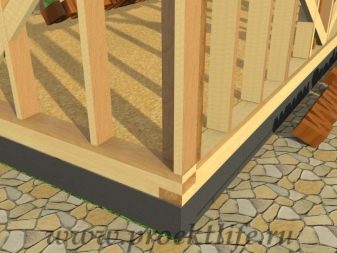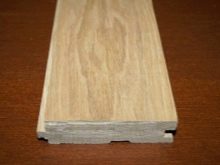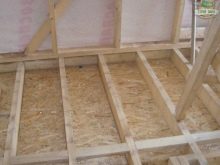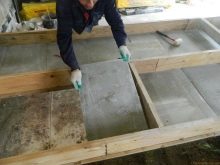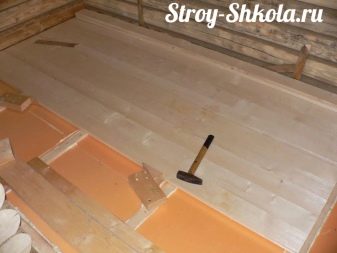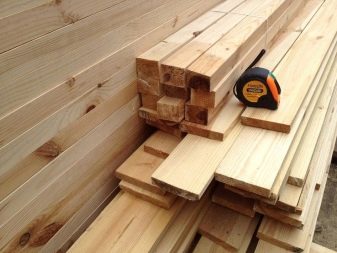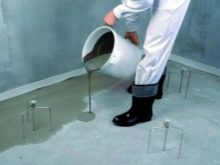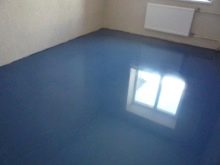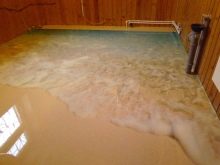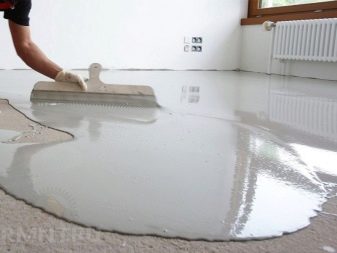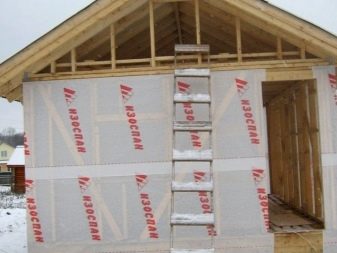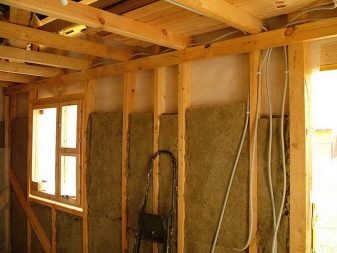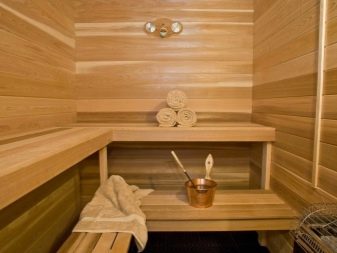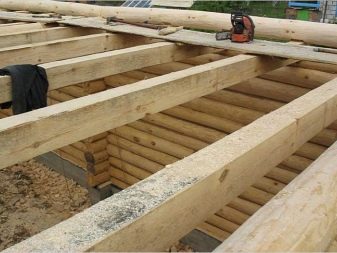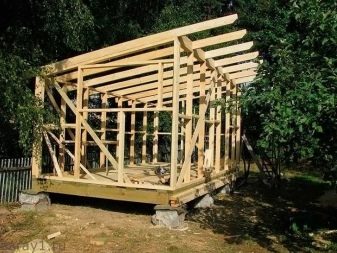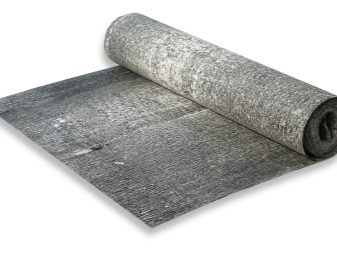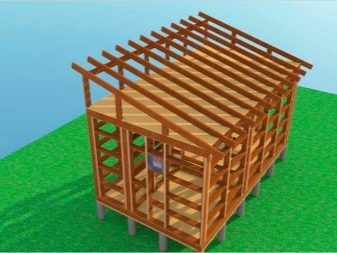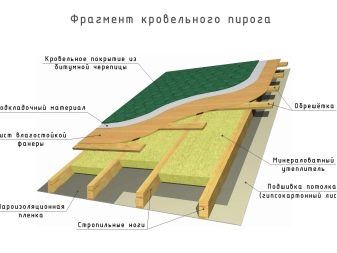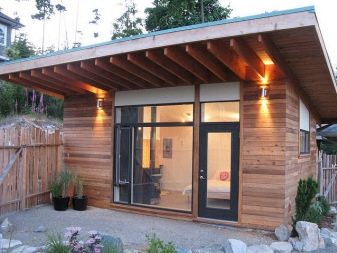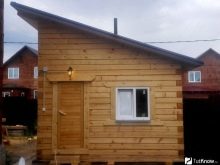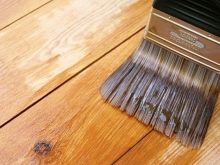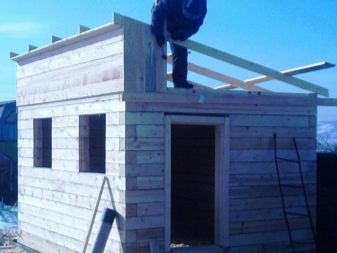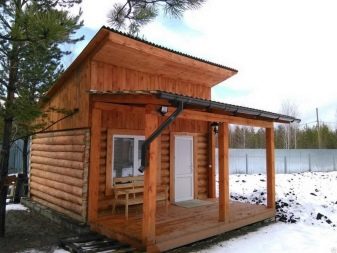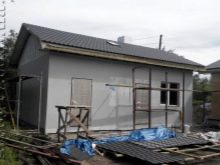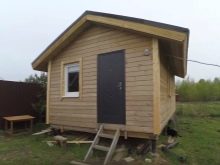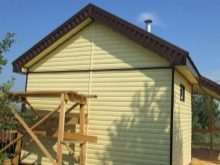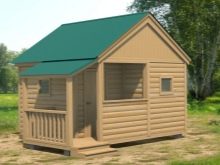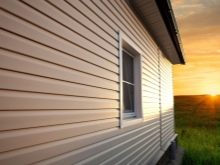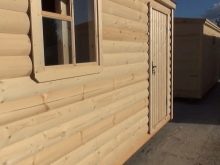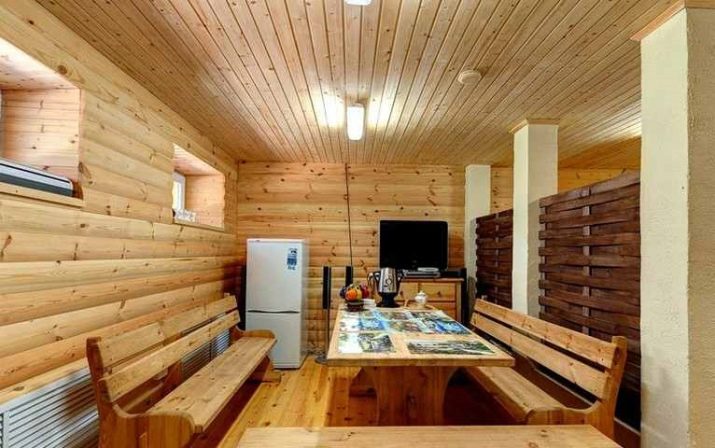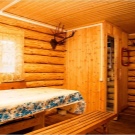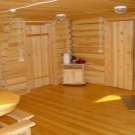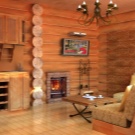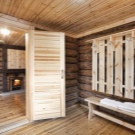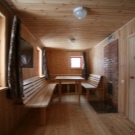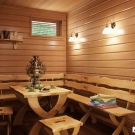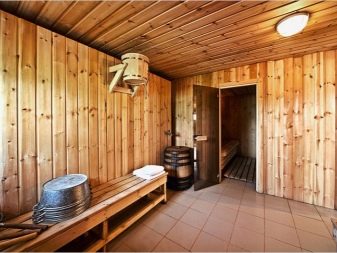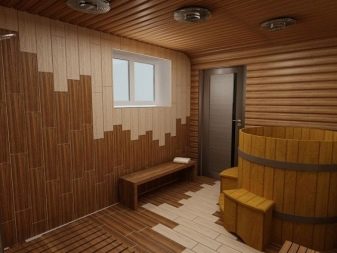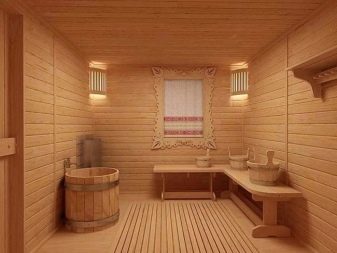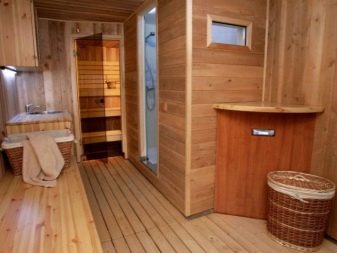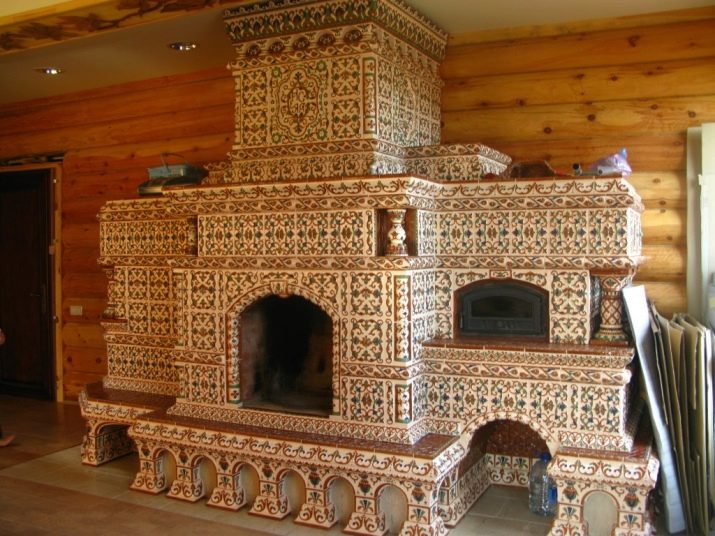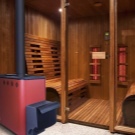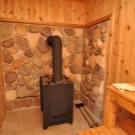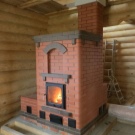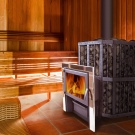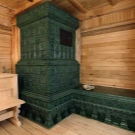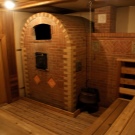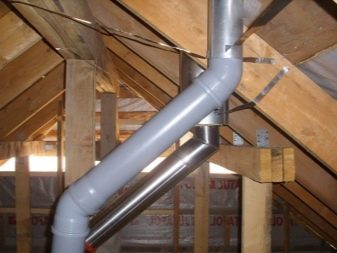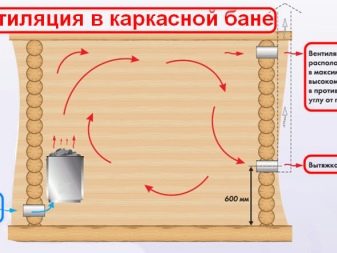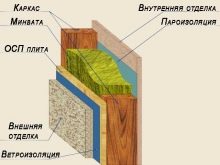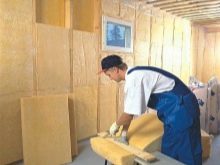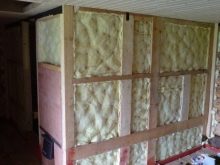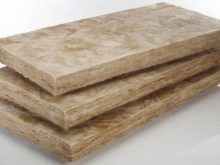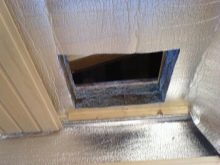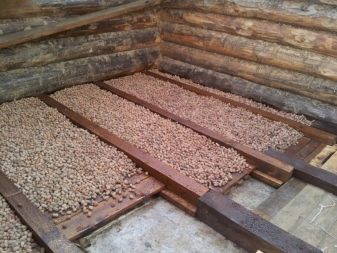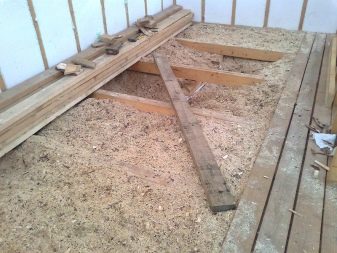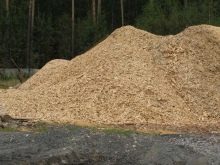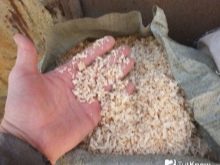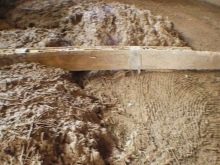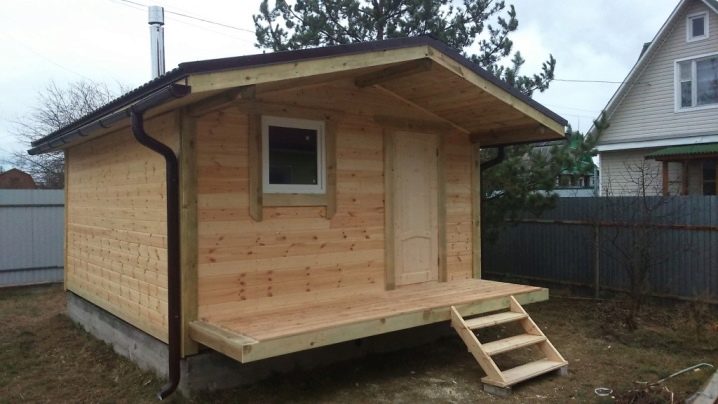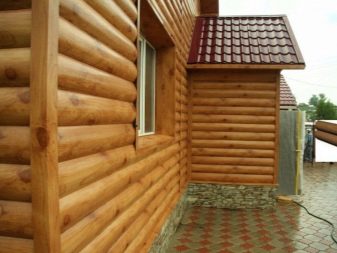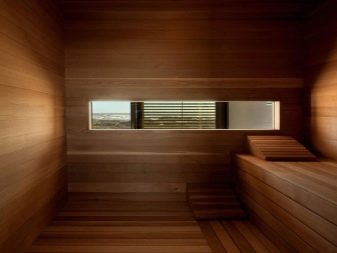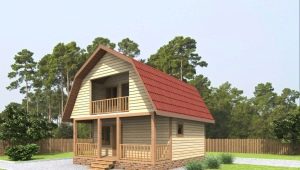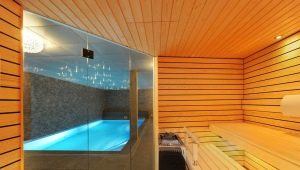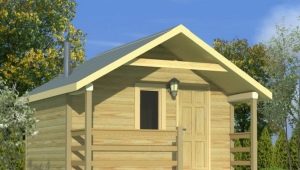Frame bath: examples of projects
The construction of the bath is necessary at any dacha and in a country house. But the traditional options that use brick or timber, have several disadvantages. But deprived of their frame buildings must be built on a special technology.
Special features
It is very difficult to build buildings, even such minor ones as a sauna, with brick or logs with your own hands. You will need to spend a lot of money on materials, prepare flawless drawings. And without the help of anyone, it would not be possible to do such work at all. Therefore, frame projects deserve increased attention. Moreover, the consumption of wood in comparison with conventional structures from timber decreases exactly by half.
The buildings are relatively light, even if they are made in dimensions of 6 by 4 or 6x6 m; if the size of the structure is 3x4, 4x4 m, this circumstance manifests itself even more.Therefore, there is no need to prepare solid foundations. You can simultaneously trim the external and internal walls, and the overall speed of installation increases markedly. The smallest area of the steam room is 250x250 cm. It is recommended to use asbestos-cement pipes with a diameter of 100 and a length of 4000 mm, which are filled with concrete.
All wooden elements are thoroughly dried before installation. Rafters are collected on the ground, and then alternately lifted and set over the racks of the frame. Roof do only in ventilated form.
It is advisable not to raise the ceiling in the steam room above 210 cm. Only after completing the finish of the frame, the bath is divided into separate rooms.
Advantages and disadvantages
Indisputable advantages of frame baths are:
- Ease of construction;
- cheap design (small payment for materials);
- simplification of foundation work in comparison with other options;
- low thermal conductivity;
- the ability to make communication channels inside the walls and not to spoil the appearance;
- no shrinkage;
- no need for complex construction equipment;
- ecological safety (a rarity for country budgetary constructions);
- the ability to perform all the work without the involvement of specialists;
- elimination of wet works - you can build in the winter and even where there is no sustainable water supply;
- wide variety of finishes.
But after carefully reviewing the reviews of owners and developers, you can immediately find certain shortcomings. Each of them can be eliminated by timely measures, only because it is necessary to properly understand possible problems. The frame baths in their pure form quickly cool down, and therefore an ugly fungus appears inside after a short time. To cope with such a difficulty, you need to apply only the highest quality insulation.
Polyfoam or simple mineral wool does not serve effectively enough, and the first option besides easily ignites.
It is possible to prolong the service life of the shield bath, if you impregnate all used timber and boards with antiseptics of a special sample. After 18-24 months, the frame shrinkage is sometimes 80-100 mm. As a result, the exterior and interior are deformed. To reduce such a risk can, if you take the lumber, past chamber drying.
Subtleties of design
The simplicity of construction and its accessibility for non-professionals does not mean that you can safely get to work without preparation. Even the experience of such works does not give grounds for a complacent attitude. To avoid serious mistakes will help a well-thought-out project and drawings of the future structure.
In an insignificant area (3x4 or 4x4 m) it is required to maximize the intensity of the use of space. If possible, such small baths in general should be avoided if there is enough area for construction.
The simplest scheme is when the steam, shower, boiler and dressing room are combined. But such a step is acceptable only for mini structures or bathhouses, because it is impossible to distribute the temperature as expected. Therefore, they try to create even with the smallest dimensions, even if small, but autonomous rooms. Bath 3x4 m may well be heated by a small boiler or a wood-burning stove. Some designers even find the opportunity to complement it with a veranda or terrace.
Minimal projects have a number of valuable properties:
- insignificant consumption of building materials;
- almost complete elimination of waste;
- high speed of work;
- durability and reliability (as it is not required to save on a small area on a small area).
It should be remembered that even a small one-story extension to the house must be registered with the cadastral registration authorities.
On a larger plot, it is quite possible to build a 6x6 size bathhouse: it already allows not only washing off the dirt, but also inviting the whole family and even a company of friends. Typical projects with such parties imply a significant area of the rest room - it can reach 20 m2. Most often it is there that the stairs connecting the first floor with the attic are located.
The two-storeyed bath surpasses the one-storeyed one only because it allows you to organize additional space for living and leisure. Often there are placed rooms for guests, bedrooms, set up tables for billiards or other sports equipment.
Thanks to the frame technology, the overwhelming part of the cost relates to the foundation of the building, and if it already exists, the subsequent stages of work will be much more accessible.
In the construction of two floors, the first step is the creation of the foundation of the supporting pillars, and the base must be covered with a layer of waterproofing.Experts recommend building a truss system of a bath made of boards with a section of 10x5 cm, and a board with a thickness of 2.2 cm usually goes to the crate.
The frame-shield structure is assembled on the principle of a toy constructor. Finding combinations of elements suitable for constructing a basin with a pool is not difficult, then they are only put on the prepared frame. The set usually includes detailed technological instructions that help to avoid mistakes - if only it is strictly followed. In the case of mobile baths, it is still easier - they are not collected at construction sites, but at industrial plants. All that remains for customers is only to add ready-made blocks with necessary details.
Most projects involve the use of gable roofs, the attic space under them is not organized or it is very small. Inside, but often put bath inventory. When choosing the type of foundation are guided by the category of soil and its condition. The mass of the building, even if we consider the presence of a second floor in a number of variants, is relatively small. The design indices of warming depend on whether the bath will be used year-round or it is intended only for the warm season.
Calculation of the amount of materials
The need for metal frame units is not so difficult to calculate: any seller will be able to do this, having learned the necessary dimensions and performance. In typical projects, the exact consumption of the metal is normalized, and if they are prepared according to an individual order, then all the calculations are assumed by the designers. But still, they must be controlled, because even with iron material, part of the builders may make “mistakes” in their favor. Before calculating the need for wood, you need to choose whether to use a timber or a log in this case. Bar-based designs are preferable because:
- shrinkage is noticeably reduced;
- There are no strict restrictions on size and geometry;
- the work is greatly simplified.
The strongest timber, according to experts, is made from coniferous species, moreover, they are less susceptible to the destructive action of insects and microorganisms gnawing a tree. Standard dimensions of timber, taken into account in the calculations, range from 10x10 to 20x20 cm. The volume is calculated by multiplying the length by the height and the thickness of a single element.
Some masters say that you need to add 10-30% to the result.But this step is frankly stupid, because, on the contrary, you will have to spend less of a bar - it is not mounted on the openings of windows and doors.
Inexperienced customers and even builders replace the perimeter length with an area, and then find themselves forced to stop work, buy the missing materials and spend money on their transportation. In order not to be mistaken, you should also carefully check the markings and accompanying documents. In some cases, on the price tags and in the speeches of sellers, a somewhat larger bar size is indicated than it actually is.
To further save money, you can change the timber on the boards, and the lining is made of plastic lining or profile sheets. During the work only boards of the highest category are acceptable.
Stages of construction
Having considered the need for materials and choosing the size of the frame bath, you need to deal with the sequence of construction works. There are no fundamental differences from the construction of other baths or city houses in the order of the stages, but each of them reveals its own specifics.
Foundation
So, in the construction of the base is best to use columnar structures.They are assembled from asbestos-cement pipes with a diameter of approximately 10 cm, hardened from the inside with concrete. Then they mark the outer contours and with the help of a drill, drill openings extending 2 meters deep.
For your information: in some cases the amount of penetration may be greater or less. This decision is made based on the type of soil and the depth of groundwater. Each pipe is introduced into the opening and filled with sand of large fraction from above, besides it is thoroughly rammed. When pouring concrete is used, which is prepared from:
- 1 part cement M200;
- 4 parts of sand;
- 7.5 pieces of fine rubble;
- 3 parts pure water.
According to the step-by-step instructions, the filling of the pipes should be smooth; a strong steel plate should be placed on each of them when ready. Mounted pipes must be dried, and only then does the turn come to the installation of the bottom trim. The box is treated with disinfectants and covered with a layer of waterproofing. Lags are placed over the strapping, a rough floor is formed from them. In the interval separating the structure from the lag and strapping, lay the roofing material, sometimes abundantly grease this place with mastic.
The construction of the foundation under a frame bath with two or three floors should take into account the total load and snow pressure.Wooden bases are allowed to do only for miniature baths, the total area of which is 12 square meters. m and less. Increased attention will need to be paid to the calculation of the diameter of the timber and leveling surfaces.
Be sure to put on one level several bars, trimmed around the perimeter with stakes. Such systems perform well on clayey soils, where they have been serving stably for many years.
When building baths on screw piles, there is no need to dock supporting structures with the help of a beam or channels. Such supports help to build even on a hillside or on a highly eroded river bank with a rapid flow. The introduction of piles into the ground is made either with the involvement of special equipment, or through the efforts of several builders at the same time. When working it is strictly impossible to deviate the support from the horizon line.
On every fourth turn, the pile position is carefully checked using a magnetic level. The structures that are inclined when tightening are forbidden to be removed by the technology, their position is adjusted using a rotational level. To get rid of the gaps separating the pile and the surrounding soil, you can use any solid concrete and fragments of reinforcement. Having completed the installation, the piles are checked for evenness.If everything is in order, heads are welded on top of them; Drain in the bath is always equipped not only in the washing room, but also in the steam room.
Many try to put a bath on a tape base. Such a solution is acceptable even on soil prone to movement and subsidence, which can easily swell. The tape is divided into Finnish and Canadian; Both technology schools are simple, but require careful and responsible approach. Monolithic foundations erected directly on the construction site, and prefabricated only stack and connect. Most often they are guided by shallow deepening (up to 50 cm), such a tape is evenly diluted under the bearing walls.
Choosing the right basement option is often difficult without geological surveys. The simplest test can be done independently: the type of soil and its visual characteristics are recognized by digging a trench 150 cm deep. Carefully evaluate not only the height of the groundwater, but also the level at which the earth freezes.
For any type of base, the construction site is cleaned of grass and shrubs in advance, flowers and sod. There should not be even stumps, roots and any items that could interfere with construction.
Strong cords of colored fabrics help to simplify the markings.In accordance with the markup, you need to dig a notch under the foundation, which will be 50 cm deeper and 400 cm wider than the prepared guide. The pillow is made of sand, which is plentifully filled with water and rammed. Then overlap the first layer of rubble. Waterproofing is placed on the side planes of the trench. Roofing material is traditionally used, although it is increasingly being replaced by a more modern penetron.
The formwork is created as follows: the upper edge of the waterproofing serves for laying boards, their thickness is 50 mm, and a maximum width of 1.5 m. Laying the board is necessary without the slightest crevices, with elevation above the ground by 30 cm. Then reinforcement is also carried out: wire reinforcement winding 50 mm below the top of the formwork (later completely hidden by a layer of concrete). Concreting is performed with a mixture of cement with sand and gravel, in terms of thickness it is similar to dense sour cream. Additional hardening is achieved by plasticizers.
It is recommended to prepare the mortar yourself, because it is much faster than getting the finished mixture from the factory. In addition, this approach will help preserve the quality of the cold joint, avoid leakage of water through it, which would spoil the base. And, not least, cost differences can be neglected.Having completed the work, the foundation is covered with a material impermeable to liquid. The concrete will harden in 24 hours, but it will gain final strength only in a few weeks.
Formwork should be made using even and strong shields to make it look perfect. Nails are hammered strictly from the inside to the outside. If you do the opposite, removing the shields will be much more difficult. When working on formwork structures, you need to immediately think about the findings for sewage, water supply and electrical cables. If they are not immediately provided for, then it will be necessary to hammer and violate the quality of the monolith.
It is quite permissible to lay the ribbon foundation in the form of a monolithic belt under the bath from the frame, if the fertile soil layer is removed and replaced with sprinkled sand.
Both the monolithic solution and the low-depth structure, and the non-recessed base, are necessarily preserved against the force of frost heaving. For this use:
- drainage facilities;
- side faces;
- insulation around the blind area;
- removal of heaving soils with their replacement by sand or rubble.
Tapes with a small depth should not be used on different slopes: there they will not withstand considerable shearing.When built on dusty sand or mounds, they place a expansion slab at the bottom. Properly executed monolith always has a greater height than width. Moreover, the difference is 2-4 times; Such a step will make the basement part of the structure optimal, it will be possible to form both the overlap of the beams and the ground floor.
Walls and floor
Begin to work, placing a special rack, which will be fixed upper strapping. In between, other racks are added. They will make the bath stronger and more stable. The box is covered with boards, attach them to the screws. Consistently assembled parts, form the design finally.
In frame constructions, windows and doors are mounted immediately, without waiting for the completion of the work.
In most frame baths, floors are made of lag and planks, but it is impossible to accurately determine the appropriate value of these elements without complicated calculations. But there is no need for this - private developers can easily do with ready averaged values. In most cases, boards of 30–40 mm in thickness and finishing lags based on timber with a section of 100x150 mm are acceptable.The thickness of the board, expressed in millimeters, should approximately correspond to the gap between the lags, expressed in centimeters.
If thermal insulation is used, the gaps between the lags of the finished flooring are adjusted to the thermal layer being created.
As for the basic materials, then all long-serving wood species are suitable for creating a floor in a frame bath. But poplar and other soft wood are unacceptable. Before buying and using, you should carefully check the dryness and integrity of the material, the absence of cracks, splits and other problems. Ideally, all sawn timber should be taken from the same batch that has passed chamber drying.
Finishing flooring is desirable to do from cut or grooved boards, because it does not need to be further polished, but the rough base can be uncut.
An alternative to wooden structures is often the self-leveling floor. This solution has become increasingly popular over the years, pushing ceramic and stone surfaces into the background. The key advantages of the self-leveling floor can be considered:
- integrity of the coating being created;
- high mechanical strength and excellent wear resistance;
- zero level of fire danger;
- lack of dust and harmful emissions during operation;
- a significant variety of design options, including the decoration of three-dimensional drawings;
- care is much easier than wooden structures.
But there are also objective weaknesses: for example, the self-leveling floor finally solidifies only after several days, when you can walk on the wooden floor immediately. There is a high risk of scratches and dirt, and the cost of such a coating is very high. It is recommended to do any bath floors with a slope towards the drain, this will prevent water and soap suds from spreading in all directions. Self-leveling floor can be done horizontally (without slope) or pour the mixture on a base that already has a slope. The first option requires carefully sealing the intersection of the floor with the walls, and the second is more difficult to perform, but directs all the liquid in the right direction at once.
Bulk floor can not just "pour": its substrate is prepared very carefully. On top of the tree you need to lay powerful screeds made of concrete, and with reinforcement.The sooner the mixture is poured, the better - it rapidly loses fluidity, and if this happens before the end of work, all costs will be in vain. Most often the floors are poured together.
For baths it is recommended to use polyurethane-based compounds, they have proven themselves much better than epoxy or polymethylacrylate.
When working with walls, in most cases, facial lining is made on the basis of clapboard or chipboard. Waterproofing is provided by parchment, laid under the outer skin. Only then the heater is used, which should be perfectly environmentally friendly and fire safe. The total thickness of the cake and its individual layers is determined by the climatic parameters of the territory and the characteristics of the use of a frame bath.
A year-round structure should have not only thicker walls, but also a special vapor barrier. The best solution for it is considered plastic film.
Painting wall cladding, even in the waiting room, is undesirable because a pair of even the safest paints and varnishes can be harmful to health.When thinking through the wall structure, special attention is paid to how the ventilation channels and electrical wires will pass through them. Since flammable materials are used for exterior decoration, and excessive moisture is often present in the air, closed, thoroughly insulated cable ducts should be preferred.
If the rooms are to be trimmed with boards, their thickness should be about 30 mm. With a smaller value, the strength suffers; with a larger one, the structure becomes heavy.
Roof
The basic parts used in the construction of the roof of a frame bath are gradually laid and assembled directly on the site. The farm should stand on the prepared frame basis. Simplify the work on the creation of the roof helps placing it on the rough boardwalk. The ventilation cake is always included in the model cake, therefore the gap from the rafter to the counter bar is filled with vapor barrier. The crate should be attached to the timber.
Then it is time to make gables from oriented plates or high-quality boards.In most cases it is worth confining to the simplest single-pitch roof, which is carried out quickly and without undue difficulty. But if you choose a completely original design, not every specialist will be able to complete the work correctly and within the allotted time.
What is very important, with the same area, gable solutions are 50–100% more expensive, and this difference is not justified even by their specific capabilities. With the correct calculation, a covering with one ramp will last for many years and all this time will be extremely convenient to use.
Flat roofs in the baths with their own hands is not recommended. The profitability of such a choice is only apparent - the need for powerful artificial ventilation with natural weakness absorbs all the savings. According to the qualified builders, the single-pitch roof should be located under a general slope of 20 to 30 degrees. Subject to this condition, liquid and solid precipitation will spontaneously descend.
You can create a ramp in two ways: intentionally making the walls unequal in height or installing racks.In the second version of the material is spent less, but the heat will stay worse.
Roofers with experience know that with a decrease in the angle of inclination of the roof it is necessary to use more and more smooth facial materials. But at an angle of less than 10 degrees, even the best solutions do not allow to get rid of the puddles and snow drifts. Mauerlat is formed from a coniferous timber with a cross section not less than 15x15 cm. Outside, it is covered with a waterproofing layer (lubricated with mastic or wrapped with roofing felt). Rafters are made exclusively from flat boards with a section of 5x15 cm, which are made of solid wood.
With such dimensions, an optimal margin of safety is achieved and it remains possible to fix insulation up to 15 cm thick, if needed. For your information: the length of the rafters is calculated with redundancy on the overhangs, which improve the protection of walls against water. All ends of truss legs are equipped with cuts for mauerlat, which are fastened with nails or lining of metal. The crate is attached to the feet of the rafters at a right angle.
Under certain roofing materials that are prone to deformation, an indissoluble crate is created based on moisture-resistant plywood.
In other cases, put the lattice of the rails, their thickness varies from 2.5 to 3 cm.But in each case, of course, this thickness should be uniform in its entirety. It is advisable to overlap the baths with single-pitch roofs with ondulin, corrugated sheet metal or soft tile. If there is a simple ceiling at the bottom, without an attic or attic, it is required to lay slab or rolled insulation. Regardless of this use:
- hydrophobic film;
- antipyrene and antiseptic impregnation;
- special fasteners;
- carefully selected and tested tools.
Shed-type roofs should be supported on rafters that are spaced 0.5-0.8 m apart. Roofing material should be attached to the base with special screws, including synthetic rubber hats. These tops help block water seepage. If there is no specialized fastener, you need to use simple screws, supplementing them with external rubber pads. Then the gables are sewn up, the drain is equipped - this is the end of the external work on the frame bath.
Finish
No matter how reliable and durable a “box” is, it will not work.It is imperative to protect these structures from negative external influences and at the same time make them more attractive.
Finishing exterior walls helps developers and designers to express their tastes and aesthetic priorities. Often they are trying to sheathe siding, clapboard. Slightly in popularity these materials are inferior to block house and plaster.
Before applying any lining you need to check the rough walls. They should not be even minor cracks, the skin joints should fit snugly to each other. With the help of vinyl siding, you can create a variety of visual pictures: imitation of simple wood, and "brick" wall, and something high-tech in spirit. No less well manifest themselves plastic panels, and if you want to increase the natural appearance of the bath to the limit, you should choose a block house.
In case of choosing a wall panel, it is required to withstand several days to get acclimatization.
The decoration of the frame bath from the inside is no less important than the outside. It is recommended to give preference to environmentally friendly materials, their increased cost is fully justified.The choice of design in the interior is not limited now; you can use any style, not necessarily traditional Russian. The waiting rooms are trimmed with both hardwood and coniferous wood. But the color is desirable to choose the most calm and balanced, given the purpose of the bath.
Washing compartments covered with clapboard, pre-impregnated with mixtures that block rotting. Some consumers use plastic panels and even polycarbonate sheets. In the steam room there is no place for coniferous trees, with the exception of cedar. Among the deciduous species in the first place invariably turns out to be a linden, which does not burn when touched and does not fade with long use. In more budgetary projects, preference is given to aspen and alder.
It is possible to decorate a bath brick oven with the help of tiles: this option is the simplest, cheapest and at the same time allows to provide an attractive appearance. Do not hang tiles on the wall; they should rest on the base of the stove. It is worth to refuse simple plastering, it does not give decent results even in dry rooms.Good results sometimes brings the use of decorative stone.
If the furnace is not laid out of brick, but is delivered to order, you should choose the solution that matches your chosen style.
Ventilation
Even the most durable and reliable materials will not last long if moisture inside stagnates. Yes, and the constant accumulation of stale air will not give anyone pleasure. All these problems are solved with the use of carefully designed ventilation. In most cases, the choice is made between the supply and exhaust and natural systems. Self circulation is ensured by placing the air inlet at a height of 0.5 m from the floor, and the outlet for it at about the same distance below the ceiling.
It is absolutely unacceptable to have both holes equally low. This will lead to the "congestion" of air - there will be cold near the floor, and unbearable heat on the canopy.
You can equip the outlet at the bottom only when using forced ventilation or a large ventilation pipe. Entering cold air can be organized in the space behind the stove, and the exit in the floor itself,if the basement is ventilated with outside air or other rooms. For built-in bath house is always required to use the means of forced ventilation.
What to insulate?
Blame quality and intense air exchange in the lack of heat in the bath is unreasonable. Almost always the real cause of the problem is weak and poor quality insulation. In most cases, used mineral wool slabs. Due to the large amount of air inside, they perfectly retain heat, and the high melting point makes it possible not to be afraid of fire. Often the frame wall is insulated with reed plates that are environmentally safe and perform their task well.
The cheapness of foamed synthetic materials and their ease, resistance to moisture make such protective coatings among the best. But it is important to understand that not all the materials in this series are equally perfect. In addition, any such insulation may be used only where strong heat is excluded.
Heat protection must be protected from contact with water and water vapor. Wet insulants quickly deteriorate and lose their positive qualities.
The classical approach to the insulation of furnaces and the surrounding space involves the use of asbestos for the protection of various materials. It can be used in the form of plates or cloths. But given the danger of asbestos fibers for humans, it is advisable to use other methods of finishing:
- basalt fiber;
- izolon;
- needle punched mats.
Heat in the bath can go not only through the walls; most of its leaks occur through floors and ceilings. To create thermal protection inside them sometimes use expanded clay. It is used less and less often in wall insulation, because it is too heavy (500 kg per 1 m3) compared to commonly available counterparts. In addition, claydite is significantly inferior in terms of heat retention and foam, and mineral wool, so the thickness of the heat-insulating layer grows. And he slowly, but steadily absorbs water, to dry the material is very difficult.
Quite a long history has warming frame buildings sawdust. They are absolutely safe in environmental and sanitary terms, but putting such a heat shield will not come out quickly. Wood chips are used not only for warming, but also as animal litter, fertilizer and in many other cases.Therefore, suppliers do not give it away for free, but prefer to receive money for such a demanded product. In a large city, sawdust is also sold in supermarkets, but there the price level is even higher than in sawmills.
Only hardwood shavings are suitable for use. The maximum permissible humidity is 20%, and it is better if it is even lower. Clean sawdust has not been used on construction sites for a long time, because they settle down and form voids, a fungus can appear inside.
Be sure to treat raw materials with boric acid or copper sulphate. The standard mixture also includes clay or cement (when finishing the ceiling), lime or gypsum.
The layer of sawdust under the floor should be at least 200 mm, and in the northern regions of the Russian Federation this figure can be increased by another 50%. Bulk laying involves mixing wood waste with cementitious materials, then the composition is poured into wood forms on which the floor is laid. The base is protected from moisture using kraft paper, polyethylene and similar materials. The composition is placed uniformly over the entire area, it is necessary to ram it only in rare cases.The final readiness of the insulation is achieved in two days.
Examples of finished buildings
Beautiful frame baths can be executed in the most different execution. This is what a structure looks like with a not too steep roof pushed forward over the facade. In front of the door there is a kind of platform on which you need to climb a small ladder. The design concept is clearly built in the spirit of maximum naturalness of the building. Many corner baths, built on frame technology, finished with siding.
With the right performance to distinguish them from simple log buildings is extremely difficult. The modern approach to baths often implies the use of minimalism. A striking example is presented in the photograph - there is only a canopy, a small ladder and claped walls and a rectangular window. It is possible to build such a structure with your own hands, moreover, as soon as possible. It is easy and convenient to use any of the presented types of washing.
To learn how to build a frame bath, see the following video.
